Elizabeth: The Golden Age
5.2 /10 1 Votes
35% Rotten Tomatoes 45% Metacritic Genre Biography, Drama, History | 6.9/10 IMDb 2.5/4 Roger Ebert Duration Country United Kingdom, Spain, France | |||||||||||||||||||||||||||||||||
 | ||||||||||||||||||||||||||||||||||
Language EnglishSpanishFrench Release date 12 October 2007 (2007-10-12) (United States)2 November 2007 (2007-11-02) (United Kingdom) Cast (Elizabeth I), (Sir Walter Raleigh), (Sir Francis Walsingham), (Amyas Paulet), (Elizabeth Throckmorton), (Robert Reston) Similar movies Mission: Impossible II , Dr. No , You Only Live Twice , The Living Daylights , The Spy Who Loved Me , From Russia With Love Tagline Woman. Warrior. Queen. | ||||||||||||||||||||||||||||||||||
Elizabeth the golden age official trailer 1 2007 hd
Elizabeth: The Golden Age is a 2007 sequel to the 1998 film Elizabeth, directed by Shekhar Kapur and produced by Universal Pictures and Working Title Films. It stars Cate Blanchett in the title role and is a fairly fictionalised portrayal of events during the latter part of the reign of Queen Elizabeth I of England. The film co-stars Geoffrey Rush, Clive Owen, Rhys Ifans, Jordi Mollà, Abbie Cornish and Samantha Morton. The screenplay was written by William Nicholson and Michael Hirst, and the music score was composed by A. R. Rahman and Craig Armstrong. Guy Hendrix Dyas was the film's production designer and co-visual effects supervisor, and the costumes were created by Alexandra Byrne. The film was shot at Shepperton Studios and various locations around the United Kingdom.
Contents
- Elizabeth the golden age official trailer 1 2007 hd
- Elizabeth the golden age official trailer 1 cate blanchett movie 2007 hd
- Plot
- Cast
- Filming locations
- Soundtrack
- Home media
- Historical background
- Dramatic licence
- Claims of anti Catholicism
- Critical reception
- Box office
- Awards and nominations
- Elizabeth the golden age extended uk trailer
- References
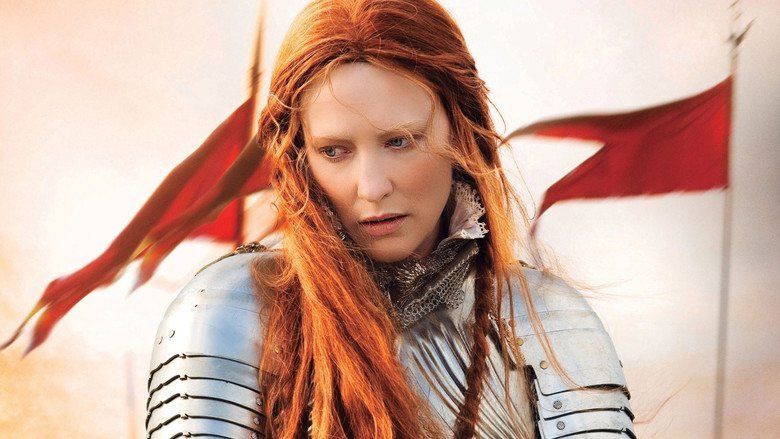
The film premiered on 9 September 2007 at the Toronto International Film Festival. It opened in wide release in the United States on 12 October 2007, premiered in London on 23 October 2007, and opened wide on 2 November 2007 throughout the rest of the UK and Republic of Ireland. At the 80th Academy Awards, the film won Best Costume Design and Blanchett received a nomination for Best Actress.
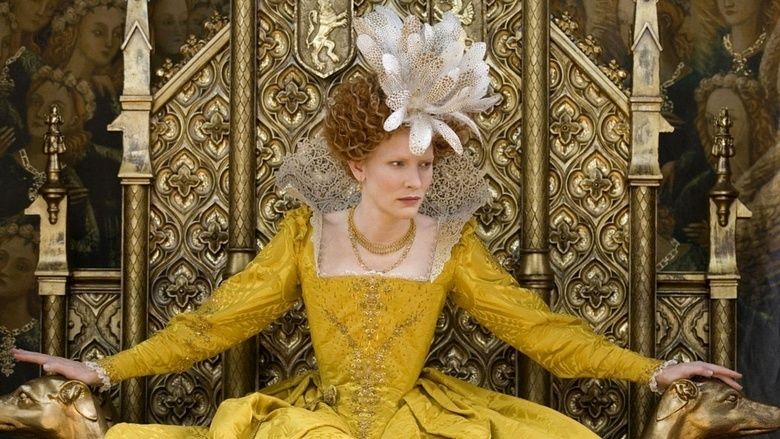
Elizabeth the golden age official trailer 1 cate blanchett movie 2007 hd
Plot
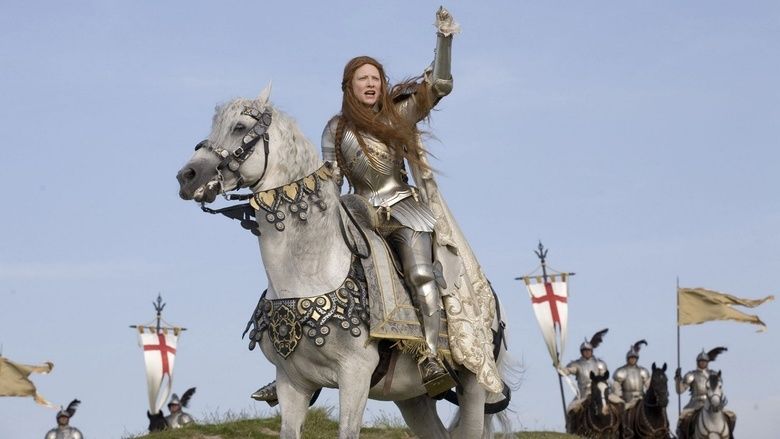
In 1585, Catholic Spain ruled by King Philip II of Spain (Jordi Molla) is the most powerful country in the world. Seeing Protestant England as a threat, and in retaliation for English piracy of Spanish ships, Philip plots war. He plans to take over England and make his daughter, Isabella, the Queen of England in Elizabeth's place. Meanwhile, Elizabeth I of England (Cate Blanchett) is being pressured by her advisor, Francis Walsingham (Geoffrey Rush), to marry, for if she dies without an heir, the throne will pass to her cousin, Mary, Queen of Scots (Samantha Morton), who is Catholic. Therefore, the Queen is presented with portraits of appropriate suitors, particularly the very youthful Charles II, Archduke of Austria (Christian Brassington), but she refuses to marry any of them.
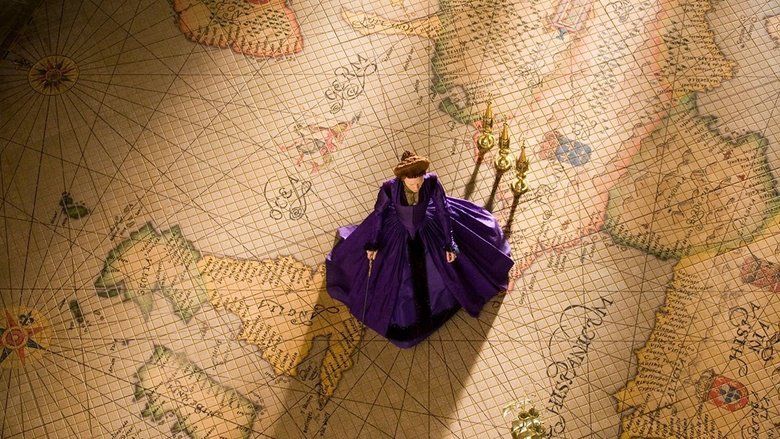
English explorer Walter Raleigh (Clive Owen) is presented at Elizabeth's court, having returned from the New World, and he offers her potatoes, tobacco, two Native Americans, and gold from a Spanish ship that he claims was "unable to continue its journey". Elizabeth is attracted to Raleigh, enthralled by his tales of exploration, and asks Bess Throckmorton (Abbie Cornish), her most favored lady-in-waiting, to observe him. Bess also finds Raleigh attractive and secretly begins an affair with him. With tensions strained between England and Spain, Elizabeth seeks guidance from her astrologer, Dr. John Dee (David Threlfall), who predicts that two empires will go to war. However, he cannot predict which will triumph over the other, leaving Elizabeth to ponder her and England's fate.
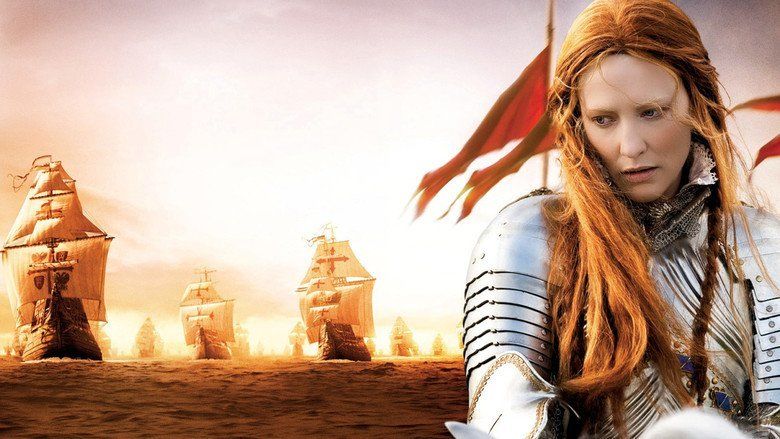
Jesuits in London conspire with Philip to assassinate Elizabeth and replace her with Mary, in what Philip calls "The English Enterprise", historically known as the Babington Plot. From her imprisonment, Mary sends secret correspondence to the Jesuits, who recruit Anthony Babington (Eddie Redmayne) to assassinate Elizabeth. Walsingham continues to warn Elizabeth of Spain's rising power and of the Catholics' plots against her. However she, unlike her predecessor and half-sister Mary I of England, refuses to force her people to share her religious beliefs. Even so, those conspiring against Elizabeth are being hunted and murdered, including Bess's cousin, Sir Francis Throckmorton and his father, whom Bess had failed to protect.

Walsingham's brother, a Papist, who knows of the plot against Elizabeth is jailed and Walsingham reveals Spain's plot to Elizabeth, who angrily confronts the Spanish diplomats. The Spanish ambassador feigns ignorance, accuses Elizabeth of receiving Spanish gold from pirates, and insinuates that she has a sexual relationship with Raleigh. Enraged, Elizabeth throws the Spaniards out of court. Meanwhile, Philip is cutting down the forests of Spain to build the Spanish Armada, to invade England. Mary writes letters condoning the plot.
Babington storms into a cathedral where Elizabeth is praying and fires a pistol at her, though Elizabeth is unharmed as it is revealed that there was no bullet in the gun. The conspirators of The English Enterprise are imprisoned and interrogated by Walsingham but do not answer why the pistol was unloaded. As Elizabeth learns of Mary's involvement in the plot, Walsingham insists Mary be executed to quell any possible revolt. Elizabeth is reluctant, but nevertheless agrees. Mary is tried for high treason and is beheaded, after ascending the block in a blood-red dress (red being the Catholic liturgical color for martyrs). Walsingham sees that this was part of the Jesuits' plan all along. Philip had never intended Mary to become queen, but since the Pope and other Catholic leaders regarded Mary as the true Queen of England, Philip uses Mary's death to obtain papal approval for war. The "murder" of the last legitimate Catholic in the line of succession gives Philip the pretext he needs to invade England and he oversees the departure of the Armada from Cádiz.
Raleigh asks to leave for the New World, which an emotional Elizabeth forbids, instead knighting him and making him Captain of the Royal Guard. Bess reveals to Raleigh in private that she is pregnant with his child, and pleads with him to leave. Instead, the couple marries in secret. When Elizabeth confronts Bess later, she confesses that she is indeed pregnant with Raleigh's child, and that Raleigh is her husband. An infuriated Elizabeth berates Bess, reminding her that she cannot marry without royal consent. She then banishes Bess from court and has Raleigh imprisoned for the crime of seducing a ward of the Queen.
As the Spanish Armada begins its approach up the English Channel, Elizabeth forgives Bess and sets Raleigh free to join Sir Francis Drake in the battle. Elizabeth gives her Speech to the Troops at Tilbury, while seated on a war horse and wearing full plate armour. The ships of the Armada vastly outnumber England's, but a major storm blows the Armada toward the beaches, endangering its formation and ships. The ships of the Armada drop anchor, and the Armada becomes vulnerable for English fire ships. Elizabeth, back at her coastal headquarters, walks out to the cliffs and watches the Spanish Armada sink in flames as the English prevail over Spain.
Elizabeth visits Walsingham on his deathbed and tells her old friend to rest. She then visits Raleigh and Bess and blesses their child. Elizabeth seemingly triumphs personally through her ordeal, again resigned to her role as the Virgin Queen and mother to the English people.
Cast
Filming locations
Soundtrack
The original score was composed by Craig Armstrong and A. R. Rahman. The score was recorded in Glasgow, Scotland, in Armstrong's studio. Kapur was thrilled to have both Armstrong and Rahman working together on the music, saying it was fascinating to watch "two people with totally different backgrounds and cultures" interact.
Blanchett had travelled to India in the early 2000s, coming away with several Indian sounds, and badgered Kapur to get Rahman to score Hollywood movies. Antonio Pinto was mentioned as being a collaborator during production, but later Armstrong joined the project. In January 2009, he expressed regret that other compositions from A. R. Rahman were not used in the film, feeling that "the score of Golden Age was not half as good as it could have been." He expressed hope to hear these pieces appear in another project.
"Opening" from the score was used in the BBC's coverage of the Single's Finals at the 2008 Wimbledon Championships. "Storm" is heard in a trailer of the 2013 film Man of Steel.
Home media
The film was released on Region 1 on DVD and HD DVD 5 February 2008. It was released on Blu-ray in 2009 and bundled with Elizabeth.
Historical background
In 1558, King Philip II of Spain's second wife, Queen Mary I of England, died. They had wed in July 1554, a year after Mary's accession to the English throne, but the English Parliament had refused to grant him much real power as co-monarch of England. On Mary's death he had tried unsuccessfully to persuade her sister and successor, Elizabeth I, to marry him, but she would not agree.
Phillip decided to take revenge. With the Pope's blessing, he launched the Spanish Armada to attack England, Protestantism, and Elizabeth herself. Sir Walter Raleigh, whom the Queen loved, married Elizabeth Throckmorton, a ward of Elizabeth's court, after learning she was carrying his child. Elizabeth I had both of them arrested, imprisoned in the Tower of London, and some time later released them.
Dramatic licence
This representation of a historical period is heavily fictionalised for the purposes of entertainment. The film's lead Cate Blanchett was reported as saying: "It's terrifying that we are growing up with this very illiterate bunch of children, who are somehow being taught that film is fact, when in fact it's invention". Some of the simpler fictions are:
Claims of anti-Catholicism
The film depicts an important episode in the violent struggle between the Protestant Reformation and the Counter-Reformation that polarised European politics. Several critics (some cited below) claimed the film was "anti-Catholic" and followed a traditional English view of their own history. A British-based priest, Father Peter Malone, declared the film to be jingoistic in his review.
In the US the National Catholic Register, film critic Steven D. Greydanus compared this film to The Da Vinci Code, and wrote: "The climax, a weakly staged destruction of the Spanish Armada, is a crescendo of church-bashing imagery: rosaries floating amid burning flotsam, inverted crucifixes sinking to the bottom of the ocean, the rows of ominous berobed clerics slinking away in defeat. Pound for pound, minute for minute, Elizabeth: The Golden Age could possibly contain more sustained church-bashing than any other film I can think of". Greydanus asked: "How is it possible that this orgy of anti-Catholicism has been all but ignored by most critics?"
Stephen Whitty of the Newark Star-Ledger said: "This movie equates Catholicism with some sort of horror-movie cult, with scary close-ups of chanting monks and glinting crucifixes". Colin Covert of the Minneapolis Star Tribune complained of what he saw as "ugly anti-Catholic imagery", and Bob Bloom of the Lafayette Journal & Courier agreed that anti-Catholicism was one of the film's "sore points".
Monsignor Mark Langham, Administrator of Westminster Cathedral, was criticised by some Roman Catholics for allowing scenes to be shot there; although praising the film as a 'must see', he suggested that 'it does appear to perpetuate the myth of “killer priests”'.
Historian Franco Cardini, of the University of Florence, alleged 'the film formed part of a "concerted attack on Catholicism, the Holy See and Papism" by an alliance of atheists and "apocalyptic Christians"'. 'Why put out this perverse anti-Catholic propaganda today, just at the moment when we are trying desperately to revive our Western identity in the face of the Islamic threat, presumed or real?'
Director Shekhar Kapur rejected this criticism of his film, saying: “It is actually very, very deeply non-anti-Catholic. It is anti extreme forms of religion. At that time the church in Spain, or Philip had said that they were going to turn the whole world into a very pure form of Catholicism. So it's not anti-Catholic. It's anti an interpretation of the word of God that is singular, as against what Elizabeth's was, which was to look upon her faith as concomitant'. 'The fact is that the Pope ordered her execution; he said that anybody who executes or assassinates Elizabeth would find a beautiful place in the kingdom of heaven. Where else have you heard these words about Salman Khan or Salman Rushdie? That's why I made this film, so this idea of a rift between Catholicism and Protestants does not arise. My interpretation of Elizabeth is an interpretation of greater tolerance [than] Philip, which is absolutely true. It's completely true that she had this kind of feminine energy. It's a conflict between Philip, who had no ability to encompass diversity or contradiction, and Elizabeth who had the feminine ability to do that'.
Kapur extended this pluralist defence to his own approach: 'I would describe all history as fiction and interpretation ... [A]sk any Catholic and they'll give you a totally different aspect of history ... History has always been an interpretation ... I do believe that civilisations that don't learn from history are civilisations that are doomed to make the same mistakes again and again, which is why this film starts with the idea of fundamentalism against tolerance. It's not Catholic against Protestant; it's a very fundamental form of Catholicism. It was the time of the Spanish Inquisition and against a woman whose half of her population was Protestant, half was Catholic. And there were enough bigots in her Protestant Parliament to say, "Just kill them all", and she was constantly saying no. She was constantly on the side of tolerance. So you interpret history to tell the story that is relevant to us now'.
Critical reception
Although Cate Blanchett's performance was highly praised, the film received generally mixed to negative reviews from US critics. As of 24 November 2007 on the review aggregator Rotten Tomatoes, 34% of critics gave the film positive reviews, based on 145 reviews. On Metacritic, the film had an average score of 45 out of 100, based on 32 reviews.
Peter Bradshaw of The Guardian, gave the film 1 star out of 5, remarking on the film's historical revisionism and melodrama. He writes: "Where Kapur's first Elizabeth was cool, cerebral, fascinatingly concerned with complex plotting, the new movie is pitched at the level of a Jean Plaidy romantic novel".
Roger Ebert gave the film 2½ stars out of 4, saying 'there are scenes where the costumes are so sumptuous, the sets so vast, the music so insistent, that we lose sight of the humans behind the dazzle of the production'. Ebert did, however, praise many of the actors' performances, particularly that of Cate Blanchett as Queen Elizabeth I. He said that 'Blanchett could appear in the same Toronto International Film Festival playing Elizabeth and Bob Dylan, both splendidly, is a wonder of acting'. Blanchett portrayed Bob Dylan in the film I'm Not There and was nominated for an Academy Award for her roles in both movies.
Colin Covert of the Minneapolis Star Tribune gave the film 3 stars out of 4, writing '... as a pseudo-historical fable, a romantic triangle and a blood-and-thunder melodrama, the film can't be faulted' and 'This isn't historical fabrication, it's mutilation. But for all its lapses, this is probably the liveliest, most vibrant Elizabethan production since Baz Luhrmann's Romeo + Juliet.' while Wesley Morris of The Boston Globe said, "Historians might demand a little more history from Elizabeth: The Golden Age. But soap opera loyalists could hardly ask for more soap."
Michael Gove, speaking on BBC Two's Newsnight Review, said: 'It tells the story of England's past in a way which someone who's familiar with the Whig tradition of history would find, as I did, completely sympathetic. It's amazing to see a film made now that is so patriotic ... One of the striking things about this film is that it's almost a historical anomaly. I can't think of a historical period film in which England and the English have been depicted heroically for the last forty or fifty years. You almost have to go back to Laurence Olivier's Shakespeare's Henry V in which you actually have an English king and English armies portrayed heroically'.
Box office
Elizabeth: The Golden Age grossed $6.1 million in 2,001 theatres during its opening weekend in the United States and Canada, ranking #6 at the box office. In the United Kingdom and Republic of Ireland the film entered at No. 4 and earned £1.3 million ($2.7 million) on its opening weekend. As of February 2009 the worldwide total was $74.2 million, including $16.4 million in the US and Canada and $57.8 million elsewhere.
In 1998, the preceding film, Elizabeth, opened in 9 theatres and grossed $275,131. Its widest release in the United States and Canada was in 624 theatres., and its largest weekend gross throughout its run in theatres was $3.4 million in 516 theatres, ranking No. 9 at the box office. The 1998 film Elizabeth went on to gross $30 million in the United States and Canada, and a total of $82.1 million worldwide.
Awards and nominations
At the 80th Academy Awards, Alexandra Byrne won the Academy Award for Costume Design. Blanchett was also nominated for an Academy Award for Best Actress for her performance in the film, becoming the first female actor to receive another Academy Award nomination for the reprisal of the same role. Blanchett was nominated for a Golden Globe Award for Best Actress in a Motion Picture Drama for her performance in the film, the Critic's Choice Award for Best Actress in a leading role, and a SAG Award. The film won two Satellite Awards for Best Production Design for Guy Hendrix Dyas and Best Costume Design for Byrne. Dyas received a nomination from the Art Directors Guild for Best Production Design in a Period Film, and Byrne a nomination from the Costume Designers Guild for Best Costume in a Period Film. The film was also nominated for four BAFTA Awards including Actress in a Leading Role, Best Production Design, Best Costume Design and Best Makeup. At the 11th Pyongyang International Film Festival held in September 2008, one of the awards for special screening were conferred upon the film.
Elizabeth the golden age extended uk trailer
References
Elizabeth: The Golden Age WikipediaElizabeth: The Golden Age IMDbElizabeth: The Golden Age Rotten TomatoesElizabeth: The Golden Age Roger EbertElizabeth: The Golden Age MetacriticElizabeth: The Golden Age themoviedb.org
